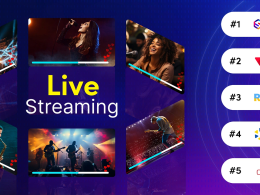Introduction
In 2024, virtual concerts are revolutionizing the way musicians connect with their audiences. With the rapid advancement of technology, musicians now have access to a wide range of platforms to host live performances online. Virtual concerts offer artists the ability to perform for global audiences, making it easier to reach fans across the world. For musicians, these platforms not only expand their fanbase but also provide new ways of monetizing their performances. Here, we explore the top 6 virtual concert platforms in 2024, examining their features, benefits, and how they stand out in the virtual concert industry.
The Rise of Virtual Concert Platforms

Virtual concert platforms have seen a huge rise in popularity over the past few years. With advances in technology, musicians now have the ability to perform live for audiences around the world without leaving their homes. The COVID-19 pandemic played a big role in pushing virtual concerts to the forefront, as artists needed new ways to stay connected with their fans while live events were limited. Today, these platforms continue to grow, offering more features and better experiences for both performers and viewers.
How Virtual Concerts Help Independent Musicians
For independent musicians, virtual concerts offer a unique opportunity to gain exposure without the need for a record label or major promotion. These platforms allow artists to perform live, build their fanbase, and even sell merchandise directly to their audience. Unlike traditional concerts, where costs can be high due to travel and venue fees, virtual concerts provide a much more affordable option. Independent musicians can reach a global audience, which was once difficult to achieve without significant resources. These platforms are helping smaller artists gain recognition and grow their careers in new ways.
The Benefits of Virtual Concert Platforms

There are many benefits to using virtual concert platforms. First, they give musicians the chance to reach a global audience, allowing fans from different countries to attend shows. Artists also have the ability to earn money through ticket sales, donations, and merchandise, which is a great way to support their music. Virtual concerts also make it easier for musicians to perform from the comfort of their own space, cutting down on travel costs and the stress of touring. Fans benefit too, as they get access to unique performances that they might not have been able to attend otherwise.
Top 6 Virtual Concert Platforms 2024
1. Twitch
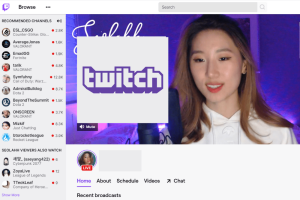
Overview:
Twitch is a widely popular platform originally focused on video game streaming, but it has since become a key space for musicians and performers. The platform offers a robust set of tools for live streaming, interactive chats, and audience engagement.
Features:
- Real-Time Interaction: Twitch allows musicians to chat live with their audience while performing.
- Monetization: Artists can earn revenue through subscriptions, donations, and bits (a form of currency).
- Customizable Streams: Musicians can personalize their streaming setups to enhance their performance’s visual appeal.
Pros:
- Large, engaged user base.
- Opportunities for ongoing fan interaction.
- Monetization through subscriptions and donations.
Cons:
- Competitive platform with many content creators.
- It requires a certain level of technical knowledge to optimize streams.
2. YouTube Live

Overview:
YouTube has long been the go-to platform for music videos, but YouTube Live has grown into a robust platform for live virtual concerts. With its massive audience and integrated tools, YouTube Live remains one of the best platforms for musicians.
Features:
- Stream Integration: Musicians can integrate their streams with pre-recorded content or music videos.
- Super Chat: Fans can interact with performers by purchasing messages to be highlighted during the stream.
- Monetization: In addition to Super Chat, musicians can earn through ads and channel memberships.
Pros:
- Access to a global audience.
- Seamless integration with music content.
- Flexible monetization options.
Cons:
- High competition from other content creators.
- Limited interaction compared to more niche platforms like Twitch.
3. Veeps

Overview:
Veeps is a platform created specifically for live-streaming concerts. This platform allows musicians to host ticketed live shows and provides fans with a seamless and high-quality viewing experience.
Features:
- Ticketed Events: Musicians can sell tickets to virtual shows, offering a more exclusive experience for fans.
- High-Quality Streaming: Veeps offers HD streaming, ensuring a professional concert experience.
- Merchandise Integration: Musicians can sell merchandise during their live streams.
Pros:
- A platform designed specifically for musicians.
- Ticketing and merchandising options for monetization.
- High-quality streaming for professional events.
Cons:
- Smaller audience compared to broader platforms like YouTube.
- No free streaming option; monetization is crucial.
4. Stageit
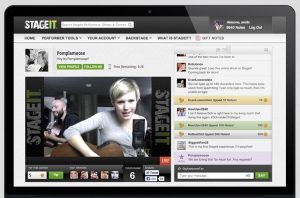
Overview:
Stageit offers musicians a platform to perform live online with the option for fans to purchase tickets for private performances. The platform is particularly suited for smaller, intimate performances, such as acoustic sets or Q&A sessions.
Features:
- Pay-What-You-Want Model: Fans can choose how much to pay for access to the concert.
- Interactive Features: Musicians can chat with their audience and acknowledge donations in real-time.
- Stream Quality: Offers good-quality streaming for up-close, personal performances.
Pros:
- Excellent for smaller, intimate performances.
- Flexibility in pricing tickets.
- High engagement with fans.
Cons:
- Limited to smaller-scale performances.
- Smaller audience compared to platforms like YouTube or Twitch.
5. Bandcamp Live
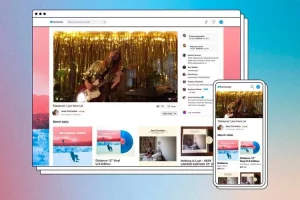
Overview:
Bandcamp Live is a platform designed to let musicians stream live performances while also offering fans the chance to buy music and merchandise directly from the artists. It combines the elements of a virtual concert and an online music store.
Features:
- Ticketed Streaming: Artists can charge for tickets and offer exclusive content for paying fans.
- Integrated Merchandise Sales: Musicians can sell digital albums, vinyl, and other merchandise.
- High-Quality Streaming: Bandcamp Live ensures that the sound quality matches that of an in-person concert.
Pros:
- Seamless integration with music sales.
- Direct connection with fans for both music and live shows.
- High-quality audio for music-focused performances.
Cons:
- Smaller audience compared to larger platforms like YouTube.
- Requires an existing fanbase for maximum success.
6. Sansar

Overview:
Sansar is an immersive, virtual reality (VR) platform that allows musicians to perform in 3D virtual worlds. This platform provides a unique experience by allowing fans to attend concerts in a digital space, interact with the environment, and enjoy an immersive performance.
Features:
- Virtual Reality: Fans can attend concerts in fully immersive VR environments.
- Customizable Concert Spaces: Musicians can design their performance stages and set the atmosphere for their concerts.
- Fan Interaction: Attendees can interact with each other and with the performance in real time.
Pros:
- Unique, immersive concert experience.
- Interactive fan engagement in a VR setting.
- Customizable performance environments.
Cons:
- Requires VR equipment, limiting accessibility.
- High learning curve for setting up and managing virtual performances.
Virtual Concert Platforms: A New Business Model for Music
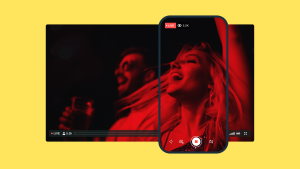
Virtual concert platforms are also changing the way the music industry makes money. Traditional concert tours often require significant investments in travel, venue rental, and production costs. In contrast, virtual concerts can be much more cost-effective, and musicians have more control over ticket sales, streaming services, and merchandise. Many platforms offer various ways for musicians to earn money, including ticket sales, fan donations, and merchandise sales. This new business model is allowing musicians to monetize their performances in ways that were not possible before, helping them stay financially stable in a rapidly changing industry.
The Challenges of Virtual Concert Platforms
While virtual concert platforms offer many advantages, there are also some challenges. One of the biggest hurdles is technical issues. Musicians and fans may experience streaming problems, like low-quality video or sound. It can be difficult for artists to ensure the best possible performance when dealing with these issues. Another challenge is standing out in a crowded market. With so many virtual concerts happening every day, it can be hard for new artists to get noticed. Additionally, monetizing virtual concerts can be tricky. Musicians need to find ways to attract fans who are willing to pay for tickets or donate during the performance.
The Future of Virtual Concert Platforms

The future of virtual concert platforms looks bright. As technology improves, these platforms will offer even more immersive and interactive experiences. Virtual reality and augmented reality could become a bigger part of the experience, allowing fans to feel like they’re attending a concert in person. Artists will likely continue to experiment with new ways to monetize their performances, such as offering exclusive content or creating virtual meet-and-greets. As virtual concerts become more common, we can expect even more artists to embrace this form of performance, leading to a greater variety of events and platforms to choose from. The future is exciting, and virtual concerts are here to stay.
Analysis of Virtual Concert Platforms in 2024
| Platform | Key Feature | Monetization Options | Audience Engagement | Stream Quality | Best For |
|---|---|---|---|---|---|
| Twitch | Real-time interaction | Subscriptions, Donations, Bits | High | Good | Regular streamers, fan engagement |
| YouTube Live | Stream integration | Ads, Super Chat, Channel Memberships | Moderate | High | Global reach, diverse content |
| Veeps | Ticketed concerts | Ticket sales, Merchandise | Moderate | High | Exclusive shows, fanbase growth |
| Stageit | Pay-What-You-Want model | Donations, Tickets | High | Good | Intimate performances |
| Bandcamp Live | Integrated sales | Ticket sales, merchandise, Digital Music | Moderate | High | Music sales + live events |
| Sansar | Virtual reality concerts | Ticket sales, merchandise. | High | Excellent | Immersive, VR-focused performances |
Comparative Table: Key Differences Between the Top Virtual Concert Platforms
| Feature | Twitch | YouTube Live | Veeps | Stageit | Bandcamp Live | Sansar |
|---|---|---|---|---|---|---|
| Platform Type | Streaming service | Video platform | Ticketed streaming | Interactive events | Music-focused | Virtual Reality |
| Monetization | Subscriptions, Donations | Ads, Super Chat | Ticketing, Merch | Pay-What-You-Want | Tickets, merchandise, Music Sales | Tickets, Merch |
| Audience | Broad & engaged | Global | Smaller, exclusive | Small, intimate | Niche music fans | VR enthusiasts |
| Engagement | High (live chat) | Moderate (Super Chat) | Moderate (chat, donations) | High (live chat) | Moderate (music-related) | Very High (interactive) |
| Technology | Standard streaming | Standard streaming | HD streaming | Good streaming | High-quality audio | Immersive VR |
Conclusion
In 2024, virtual concert platforms have grown into essential tools for musicians, offering numerous ways to engage with their audience, monetize performances, and showcase their talent. The choice of platform largely depends on the artist’s goals—whether it’s to build a broad, engaged community or to host intimate, exclusive shows. With the evolution of virtual reality, platforms like Sansar are setting new standards for immersive fan experiences, while established services like YouTube Live and Twitch continue to dominate the scene with their vast reach. As the virtual concert landscape expands, musicians now have more opportunities than ever to connect with fans and grow their careers in new, innovative ways.







